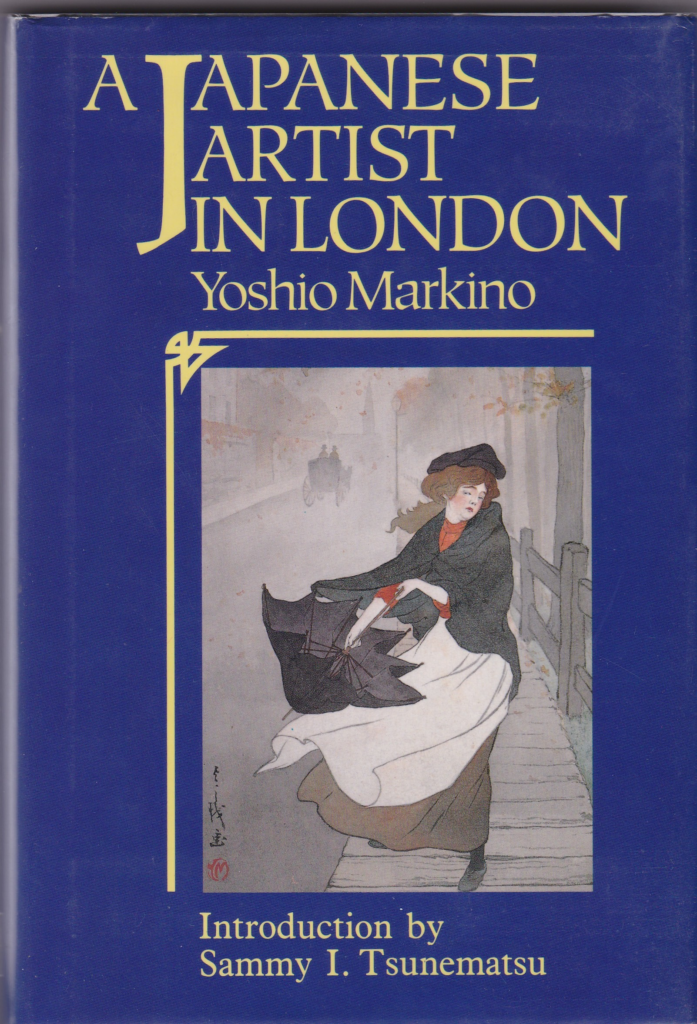Mike Guilfoyle, a member of the Friends of Brockley and Ladywell Cemeteries, stumbles upon a painting by a prolific Japanese artist who lived in Lewisham and studied at Goldsmtih’s.

I was enchanted by a painting that I stumbled upon recently by a prolific Japanese artist who I had not heard of. He lived for a time in Lewisham in the early part of the twentieth century and studied/modelled at Goldsmith’s Institute (now University).
The painting is of a women under a street Light close to Parliament (undated) by Yoshio Markino (1859-1956).
He was a confirmed Anglophile.The son of a samurai, he was said to rival Turner in his mastery of painting the London fog.
Yoshio Markino was 28 when he arrived in London and he quickly became part of a group of expatriate artists living in England.
In 1897, he sailed via New York to London after living in San Francisco, an experience characterised by racism and poverty.
He remained in London for more than 40 years, bringing the artistic sensibility of Japan to his new home.
During his early days in London he lived in dire poverty. He was so poor he couldn’t afford public transportation and was known to walk for hours to get to his classes and pay his rent with his paintings.
Living on meagre foodstuffs such as Bovril and rice, he found bedsits across the city and was greatly moved by the simple hospitality afforded him during his stays.
He studied Greek, Latin, and English and wrote essays, painted, and lectured.

Markino attended Bohemian soirees hosted by Pamela Colman Smith and iis mentioned in Arthur Ransome’s writing “Bohemia in London” as ‘the Japanese’.
He had many female friends, among them Christabel Pankhurst, Sarah Grand, and was thought to be romantically involved with Olave Potter (he illustrated her books on Italy).
In 1905, he co-produced a season of Italian, French, and Russian Opera at the London Opera House, including a production of Madame Butterfly.
In 1939 a fire destroyed many of Yoshio’s paintings in storage.
World War Two broke out and Japan allied with Germany in 1941, Yoshio was labelled an enemy alien.
In September 1942, he was repatriated with other nationals and left his beloved England and lived out the rest of his life in Japan. He died in September of 1956 at 87 years of age.

The links to Lewisham are cited here – they are derived from reading his fascinating if at times winsome auto-biography (left} – A Japanese Artist in London ( 1910)
Markino often walked from Kensal Rise where he was then living to model at Goldsmith’s Institute, but found that what little money he earned he often gave ‘every penny ‘ to his landlord and wife.
He lived in New Cross, in Amersham Road, and then in St Donatts Road, Brockley.
An amusing anecdote from the book during this period notes that “he had a young lady friend in Lewisham High Road. She wanted me to go to St John’s Church, Deptford.
“I could not understand the English enough to enjoy the sermons. I had a Bible with large leather covers. I tore off the script and put my sketching-book inside the leather cover.
“I started to sketch during the sermon. My lady friend noticed that one day and was so shocked she never asked me to go to church and our friendship ended.
“ I was sorry to make such a savage disturbance on the national religion of England.”
In case readers have noticed in the post that there are no cemetery references, Markino did work for a firm of Tombstone-Maker in Norwood Cemetery, but this employment was short lived. It appears he was criticised for drawing “such big pectorals” on one of the angel designs for a tombstone.

Oil on canvas. Sale price: £ 6,000 – 9,000. Source Bonhams
